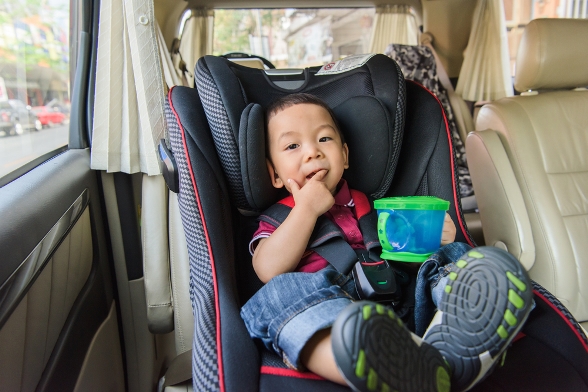Remember driving your firstborn home from the hospital? If so, you know firsthand that driving safety takes on a whole new meaning when you have a baby on board. Fortunately, driving with children has become much safer over the past few decades. In fact, the number of child deaths due to auto accidents dropped 57 percent between 1975 and 2014, according to statistics from the Insurance Institute for Highway Safety (IIHS). The bad news is that child fatalities still happen all too often, with auto accidents causing one of every four unintentional injury deaths – often because the child wasn’t properly restrained.
Protect your most precious cargo
The fact that so many of these deaths could have been prevented makes them even more tragic. Everyone in the family, from the oldest adult to the youngest child, needs to be properly restrained – all the time, every time. According to the IIHS, restraining children in rear seats instead of front seats reduces the risk of fatal injury by about three-quarters for children up to three years old, and by almost half for children four to eight years old.All 50 states and the District of Columbia have child restraint laws, although they vary considerably based on a child's age, height, and weight, and whether the vehicle has airbags. Generally, infants require rear-facing infant seats, toddlers use forward-facing child safety seats, and older children use booster seats.
Here’s what the law says here in Hawaii:
- Children under 4 years old must be in a child safety seat
- Children ages 4 to 7 must use a booster seat or child restraint
- Children ages 4 to 7 taller than 4’ 9” and/or over 40 lbs. can use a lap belt in the rear seat if a lap/shoulder belt is unavailable.
- The maximum fine for failing to comply is $100 for the first offense.
For more information, see the Hawaii Department of Transportation.
How do you make sure you get the right car seat?
There are a host of products and options on the market. Here are a few tips to get you started:
- Familiarize yourself with the various types of car seats, and compare features on various makes and models.
- Choose a car seat based on your child’s age and size, and choose a seat that fits properly in your vehicle.
- Carefully read the car seat manufacturer’s instructions (check height and weight limits) and read the vehicle owner’s manual to make sure you install the seat correctly.
- To maximize safety, keep your child in the car seat as long as the child fits within the manufacturer’s height and weight requirements.
- To learn which car seat is appropriate for your child’s age and size, check out the National Highway Transportation Safety Administration’s (NHTSA) complete list of car seat recommendations.
- Once you've purchased an appropriate car seat, don't forget to register it to receive any future recall notices.
Get everyone (safely) on board
Don’t let your child become a tragic statistic. Talk to your children about the proper way to stay safe when riding in vehicles, and make sure you have strict rules about seatbelt use for the teenage drivers in your family. Take time to do your homework on the best car seat, proper installation, and use – and make sure you use it, every time. Your child’s life could depend on it. Also, make sure your auto insurance is sufficient to protect your evolving needs. Get an auto insurance quote or contact your independent agent.

